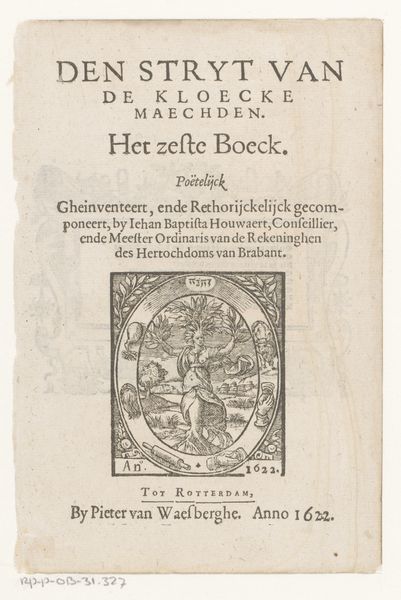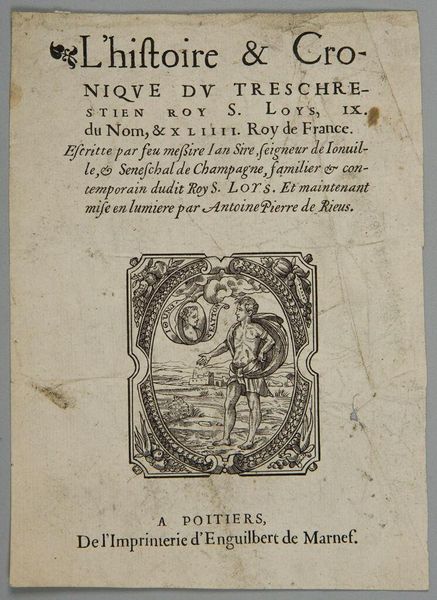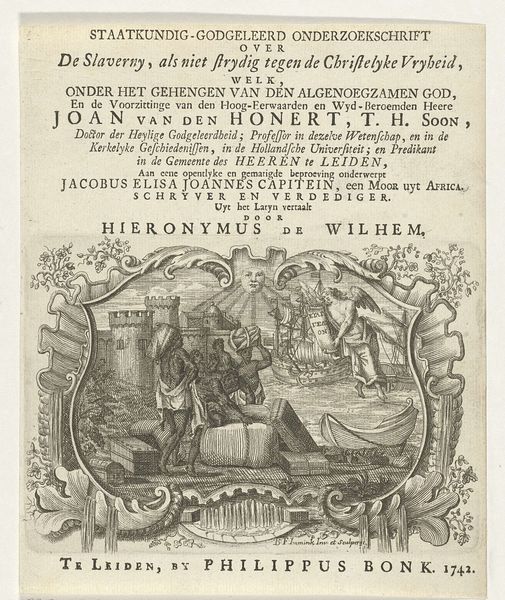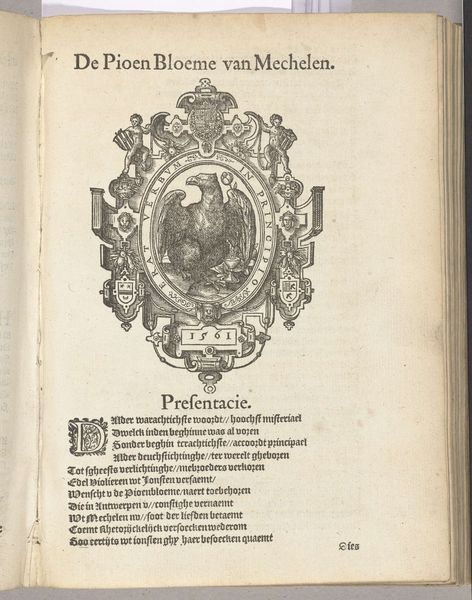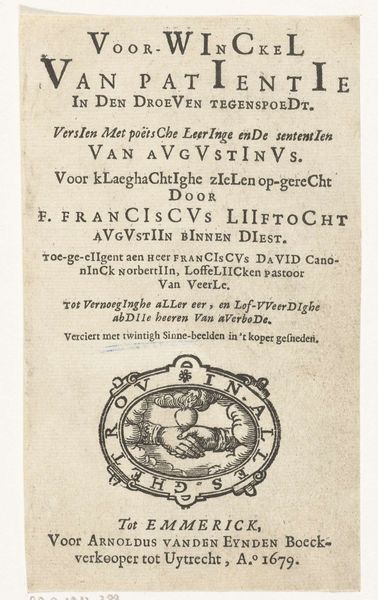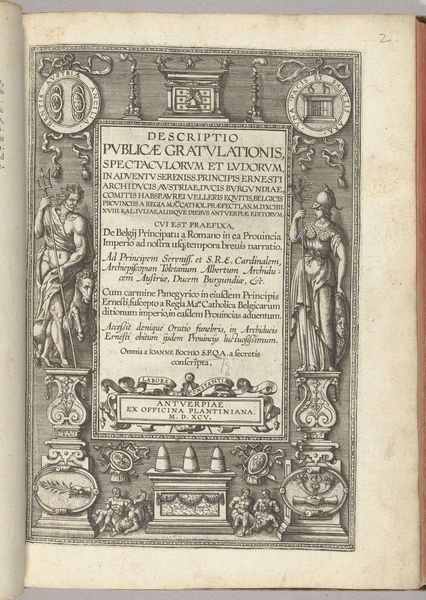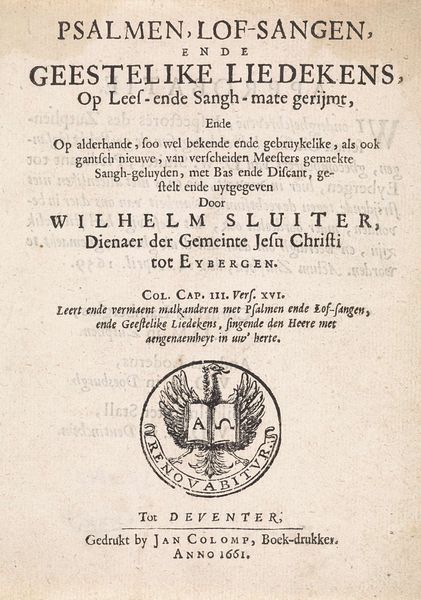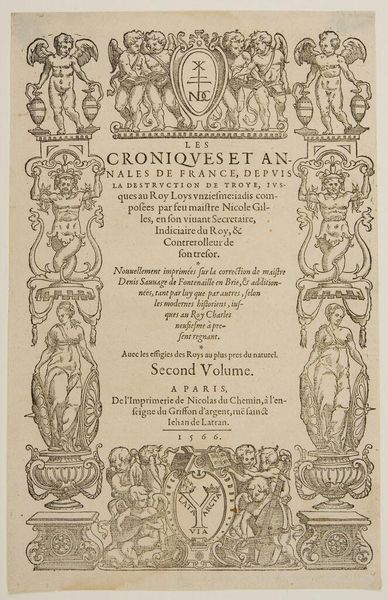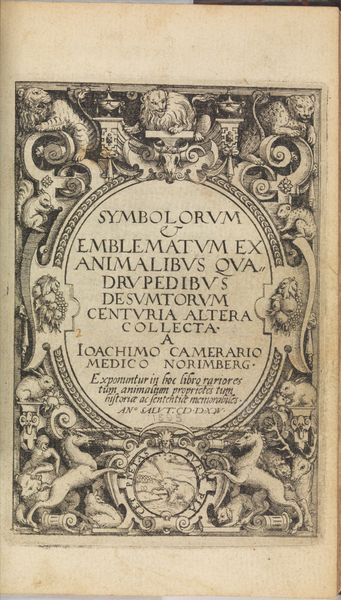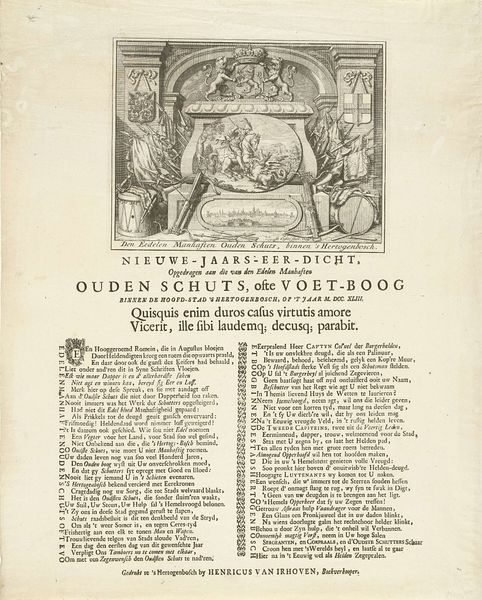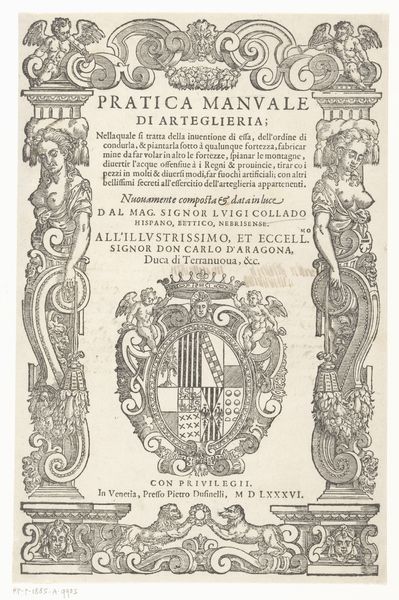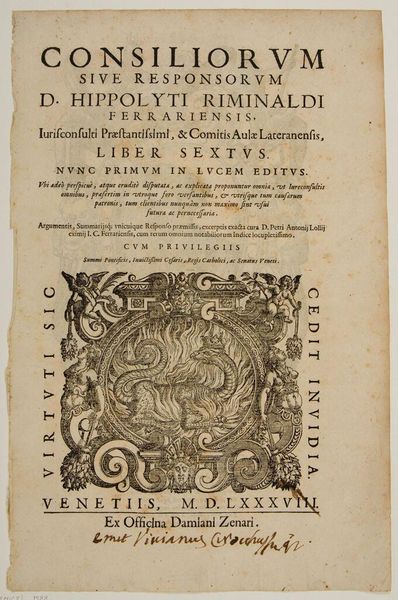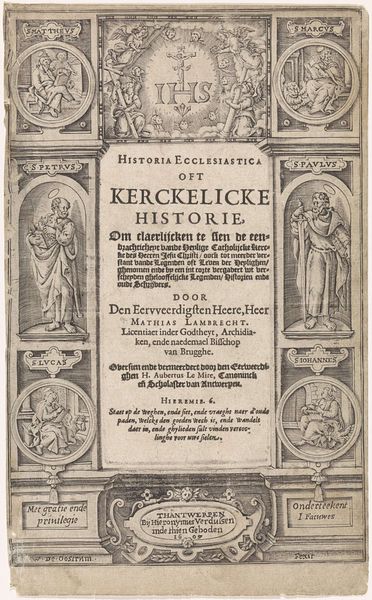
Titelblad van J.F. Le Petit, La grande chronique ancienne et moderne, 1601 1601
0:00
0:00
print, typography, engraving
#
weapon
#
baroque
# print
#
typography
#
history-painting
#
northern-renaissance
#
engraving
Dimensions: height 205 mm, width 160 mm
Copyright: Rijks Museum: Open Domain
Curator: Here we have the title page of J.F. Le Petit's *La grande chronique ancienne et moderne*, or *The Great Ancient and Modern Chronicle*, from 1601, created by Christoffel van Sichem I. Editor: It has an intensity! A riot of textures, objects, and emblems all vying for my attention within this contained rectangle, like trying to hold a storm inside a teacup. Curator: It’s certainly packed with symbolism. This engraving is more than just an announcement for the book. It's a statement. We see baroque and Northern Renaissance elements working together to frame the title, creating a kind of triumphal arch of knowledge and history. Look at the weaponry mixed with musical instruments; such items surround the page, speaking to different sides of human history and culture. Editor: And those provincial coats of arms at the very top feel rather… official? Is it meant to assert authority, perhaps? I see it both celebrating history and trying to control its narrative at the same time. It almost feels like visual propaganda— in an intriguing way, of course. Curator: Well, consider the period. The book was printed at a time of great political and religious upheaval. Le Petit was documenting the history of the Netherlands during its revolt against Spanish rule. So, yes, asserting a sense of unity and historical legitimacy would have been very much the point. It would certainly justify the present through selective presentation of the past. The book itself being Volume 1 implies further volumes that reinforce such unity. Editor: I didn’t realize the book has that particular political backstory. Now those weapons, combined with what seems to be a half-dressed torso over to the right, lend a weight of struggle that had escaped me at first glance. Curator: And notice how the open book at the very top sits alongside measuring tools like the compass? Those can represent, perhaps, both learning and precision as foundations of historical accuracy. It implies the history is trustworthy as more than storytelling. It offers something "true." Editor: But doesn't "true" history always depend so much on who is doing the measuring and what are they setting as their "true north," huh? I'll never quite be convinced when people argue it is "objective". Curator: Perhaps... It’s an excellent example of how early printed materials used visual language to shape public understanding of history and identity. Editor: I leave with more questions about power and perception than simple historical data, precisely as good art should.
Comments
No comments
Be the first to comment and join the conversation on the ultimate creative platform.
